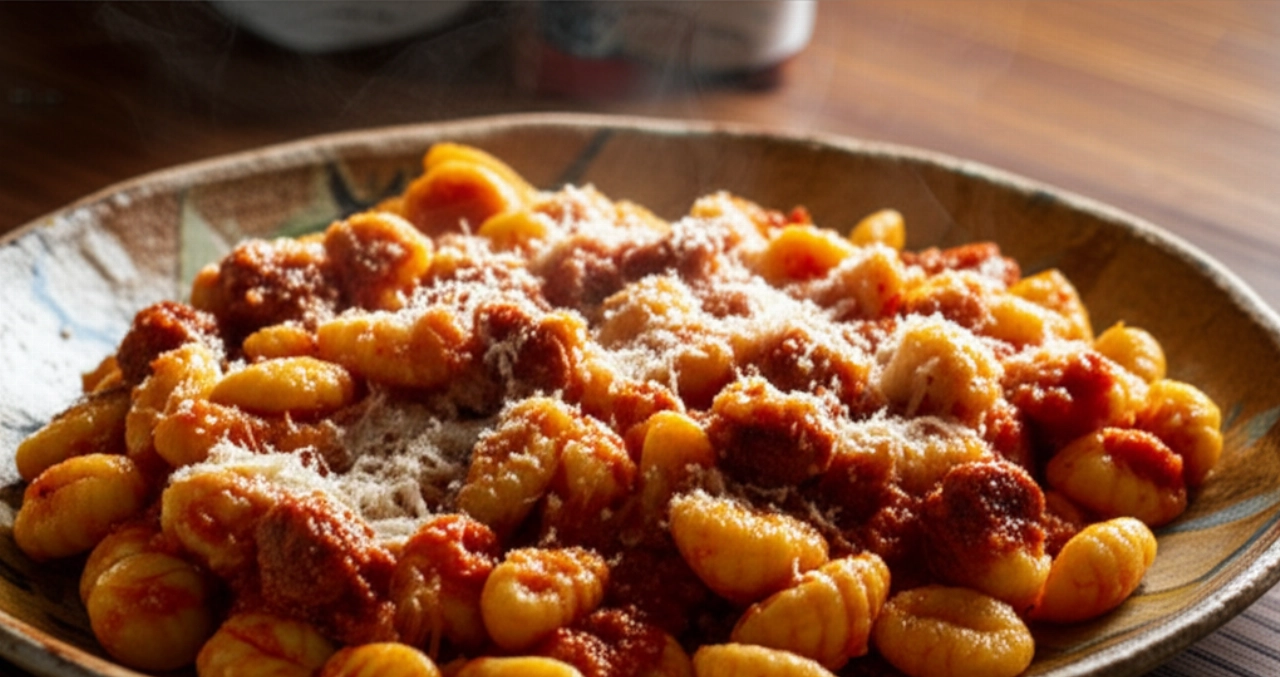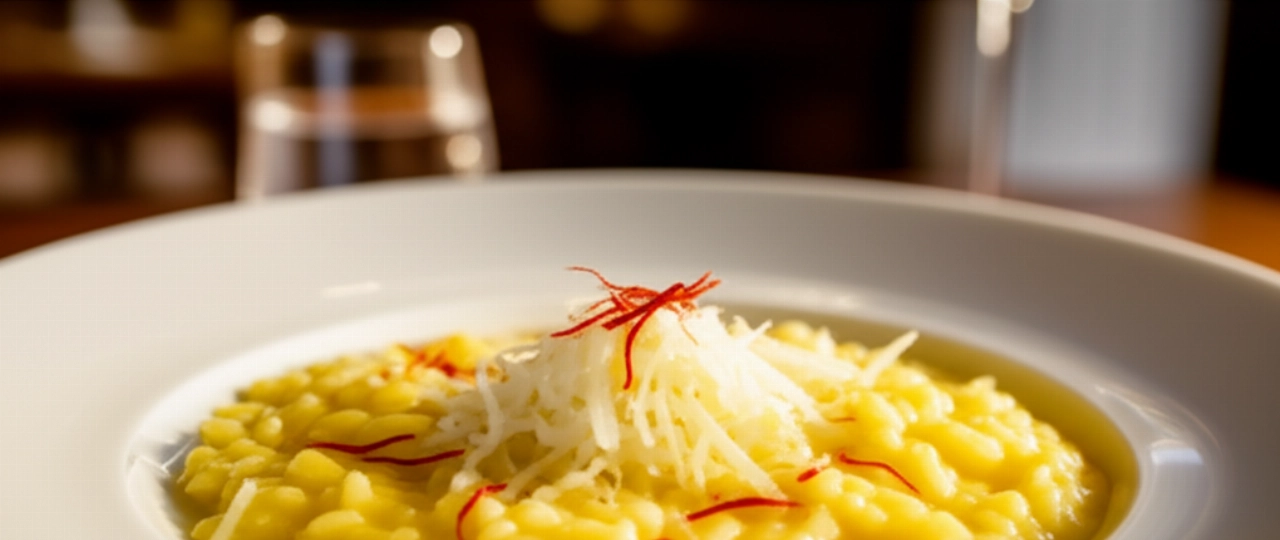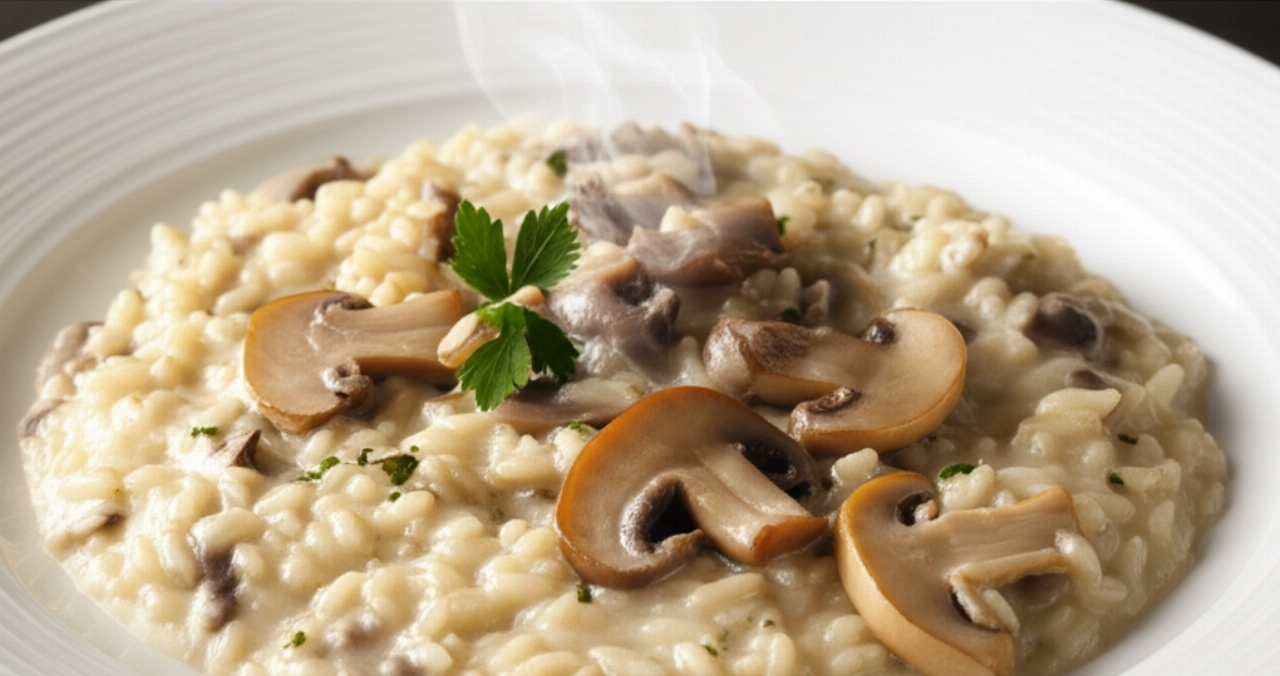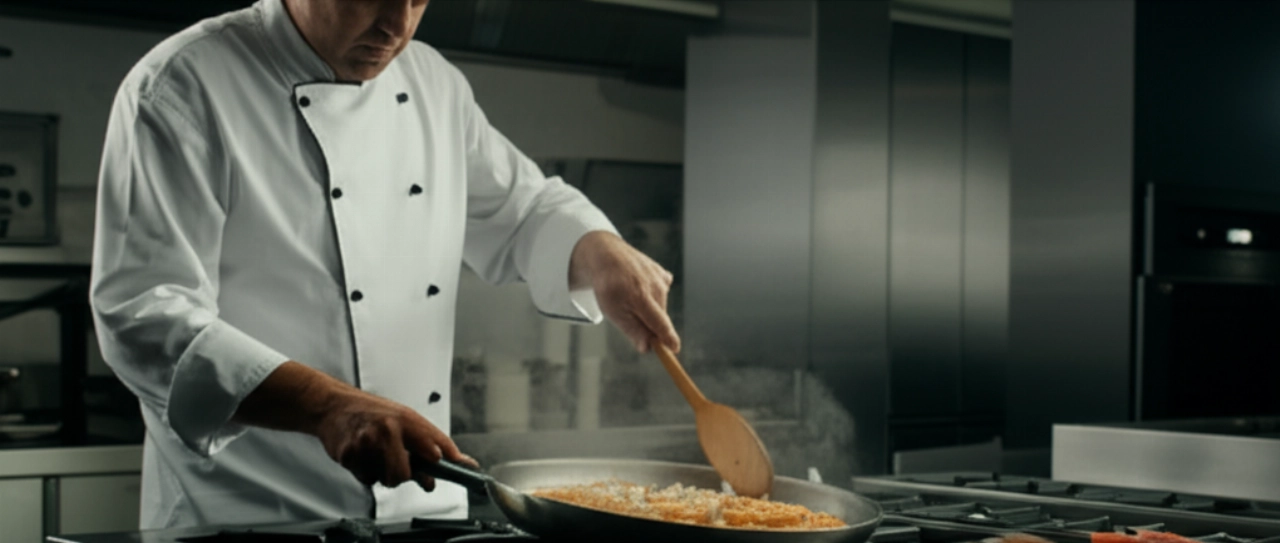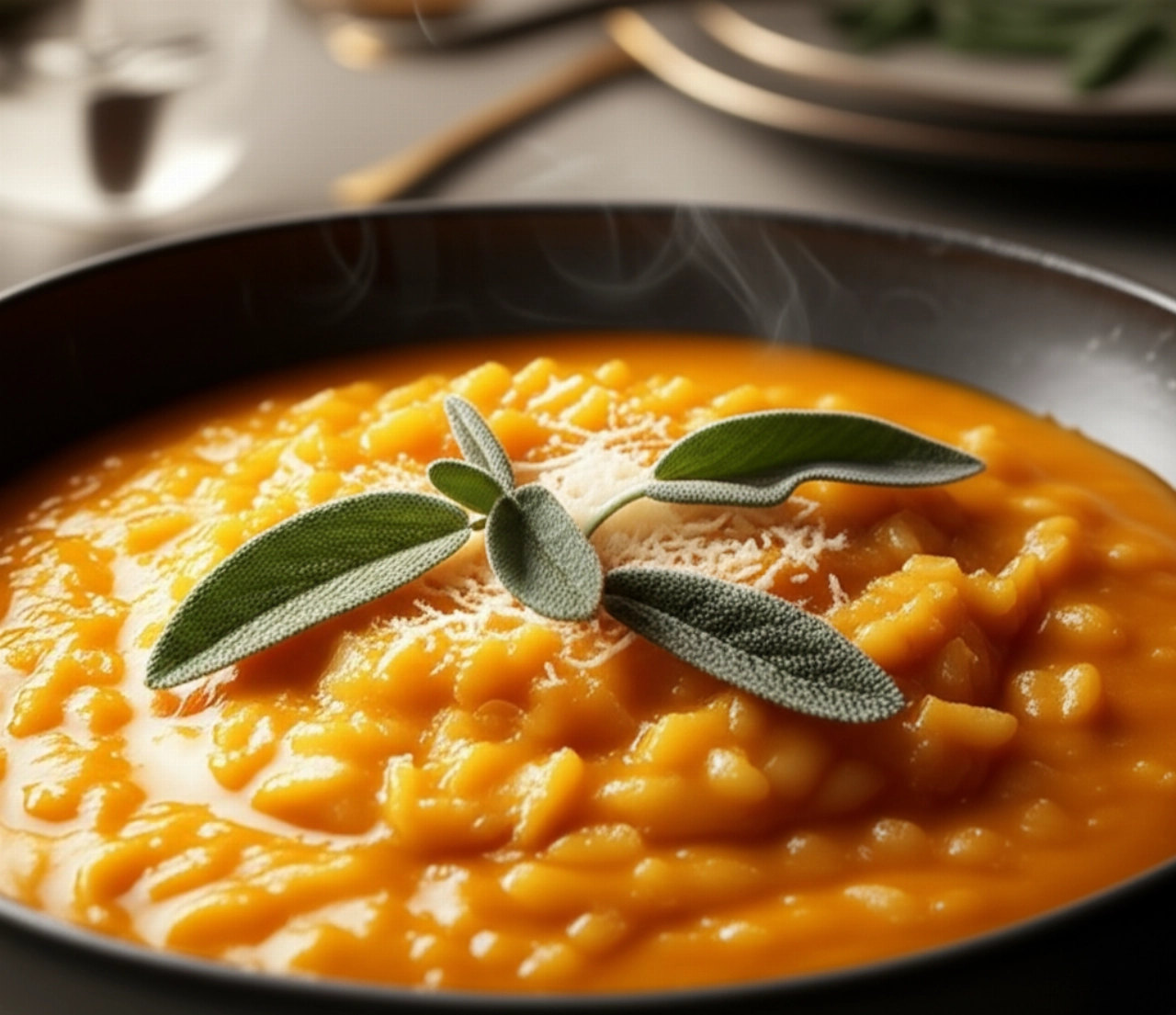There's a scent that smells of home, of celebration, of Lombardy… a scent that evokes memories and promises a flavorful embrace. We're talking about Risotto with Luganega Sausage, an iconic dish of the Monza and Lombard tradition, capable of conquering every palate with its enveloping creaminess and the unmistakable flavor of sausage and saffron.
But how many times have you tried to make risotto and it turned out overcooked, dry, or with sausage that tasted bland? Finding the right recipe, one that guarantees success without anxiety and waste, can seem like a challenge. The fear of making mistakes, of ruining precious ingredients, is a deterrent for many cooking enthusiasts.
Make yourself comfortable, because today I won't just give you a list of ingredients. On this page, I'll reveal all the secrets, tricks, and tips I've learned over years of cooking, to prepare a Risotto with Luganega Sausage that will make you say "Wow!". This is the definitive guide, full of details that will make all the difference. Success is guaranteed, and your table will be a triumph of authentic flavors.

The Secret to Perfect Risotto with Luganega Sausage: Creamy and Flavorful Just Right
The magic of this risotto lies in the perfect balance between the decisive savoriness of the luganega, the aromatic sweetness of saffron, and the enveloping creaminess of the rice. My goal is to guide you step by step to achieve an impeccable creaming and a sausage that doesn't get lost in anonymity, but rather blends with the rice, releasing all its aroma without ever being heavy or dry. The result will be an "all'onda" (wavy) dish, a true embrace of flavor that will make you feel at home, just like grandma used to make it.
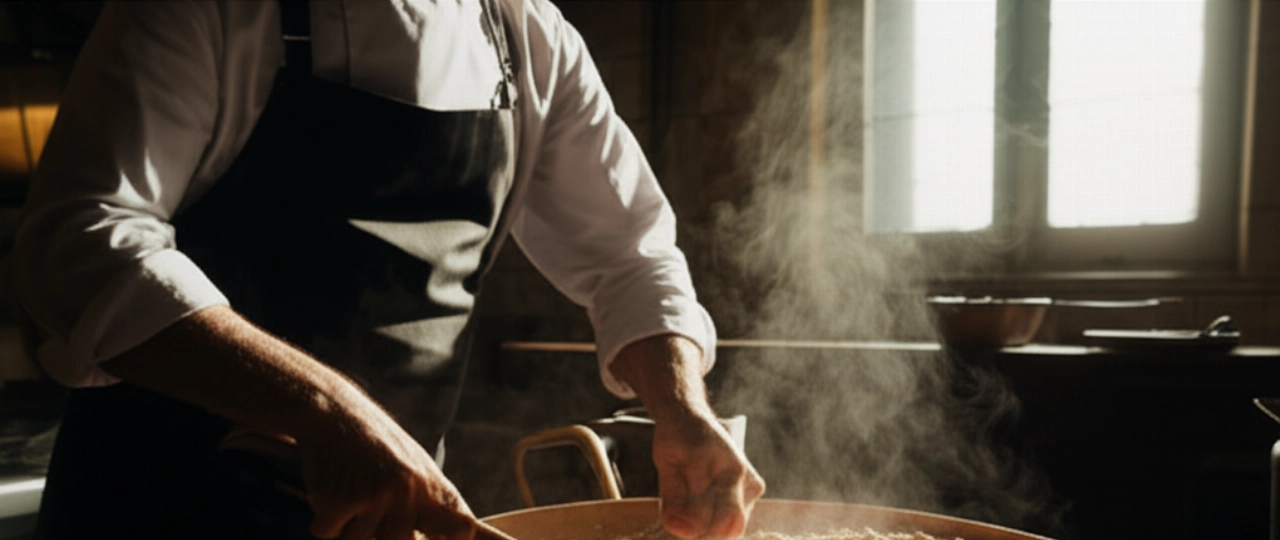
Smart Ingredients for a Chef-Worthy (and Grandma-Approved!) Risotto
The quality of ingredients is the first step towards success. It's not just about quantity, but about choosing carefully. Here's what you need and why:
- Carnaroli Rice (320 g for 4 people): It's the king of rice for risottos. Thanks to its high amylose content, it holds up impeccably during cooking and releases the starch needed for that creaminess we love so much, without overcooking. Do not use small-grain rice; you won't get the same result.
- Fresh Luganega Sausage (300 g): Choose excellent quality, preferably from your trusted butcher. Luganega is the true star of this dish; its characteristic flavor is irreplaceable. Avoid overly spiced or flavored sausages; we want the authentic taste.
- Saffron threads or powder (1 sachet or 0.2 g of threads): The golden touch that gives color, aroma, and an unmistakable flavor. If using threads, infuse them in a little hot broth for at least 30 minutes before use; they will release their aroma best.
- Vegetable or Meat Broth (approx. 1.5 liters): Strictly hot! It's the soul of the risotto. Prepare it at home with fresh vegetables (carrot, celery, onion) or meat bones for a more intense flavor. Avoid industrial bouillon cubes if you can, as they would alter the final taste.
- White or Golden Onion (1 small): Finely chopped, it will be the base of our delicate soffritto.
- Dry White Wine (½ glass): To deglaze the rice and luganega. It helps to cut through fat and adds an acidic note that balances the flavors. Choose a wine you'd enjoy drinking.
- Cold Butter (50 g): Essential for the final creaming (mantecatura). It must be cold from the fridge to create the perfect emulsion.
- Grated Parmigiano Reggiano DOP (80 g): The final touch of savoriness and creaminess. Choose a well-aged Parmigiano.
- Extra Virgin Olive Oil (2 tablespoons): For the soffritto.
- Salt and Black Pepper to taste: To adjust the flavor.
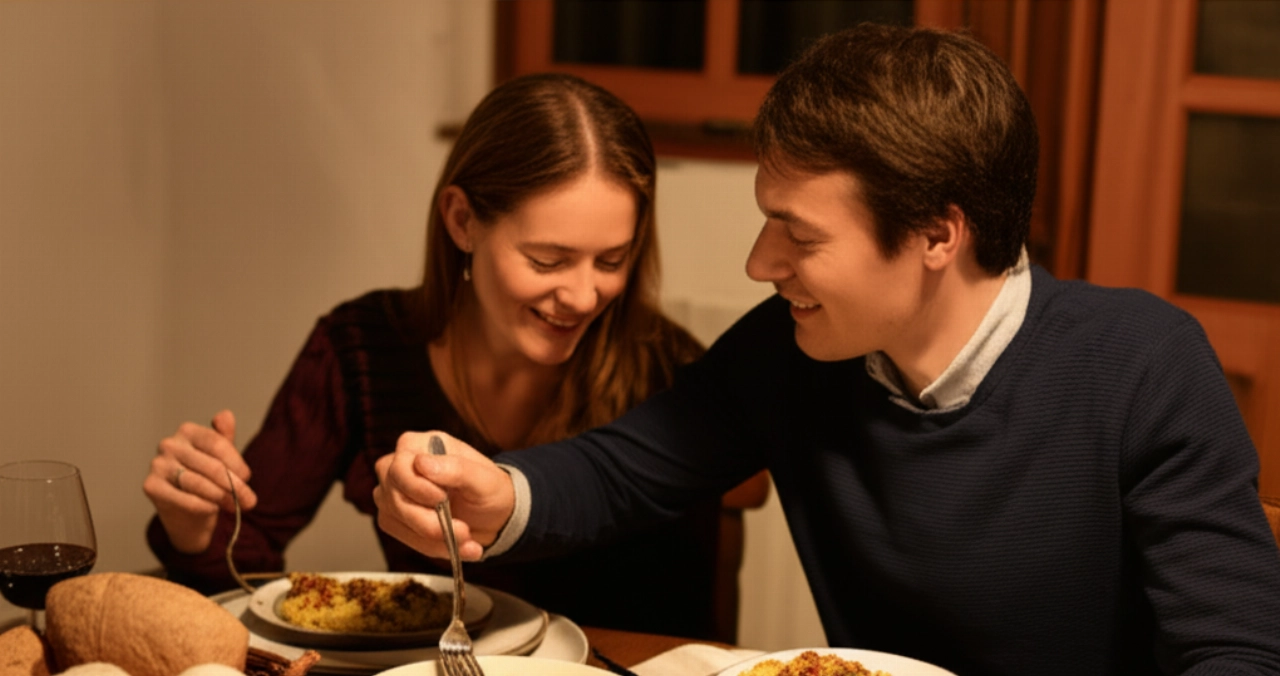
3 Common Mistakes to Avoid for a Foolproof Risotto with Luganega Sausage
Even the most experienced cooks can fall into these traps. Knowing them will help you avoid them and ensure a perfect result:
- Not toasting the rice properly: This is the key step! If the rice is not dry-toasted in the pan for a couple of minutes, the grains will not seal the starch inside. The result? A sticky risotto that's not "al dente." Toast until the grains become transparent at the edges.
- Adding cold broth or all at once: The broth must always be boiling. Adding it cold would stop the rice from cooking and compromise its creaminess. Furthermore, don't pour it all in at once! It should be added one ladle at a time, as the previous one is absorbed, stirring constantly. This allows the rice to gradually release its starch.
- Mishandling the luganega: Many crumble it and throw it directly into the soffritto. This can make it rubbery or cause it to disperse too much. The secret is to brown it separately, as I will explain, to allow it to release all its flavor and keep it juicy.
- Forgetting the final creaming (mantecatura): Without the cold butter and Parmigiano added off the heat, the risotto will never achieve that "all'onda" consistency and enveloping creaminess that make it irresistible. It's the magical touch that binds all the flavors together.
The Chef's Touch: The Secret to Perfect Luganega Sausage
This is a small trick that makes a big difference. Instead of crumbling the luganega and cooking it directly in the risotto's soffritto, I recommend browning it separately. Take the luganega, remove the casing, and coarsely crumble it with your hands. Heat a drizzle of oil in a separate pan and brown it over high heat for a few minutes, until it's nicely golden and crispy on the surface. Don't overcook it; it should remain soft inside. Once ready, drain off the excess fat and set it aside. We will add it to the risotto only towards the end of cooking. This method allows the luganega to maintain its texture, release maximum flavor, and not disperse into the risotto, ensuring a richer and more defined culinary experience.
Let's Prepare Risotto with Luganega Sausage Together: The Step-by-Step Guide
Now that we have all the secrets, let's get cooking! Follow each step carefully, and success will be yours.
- Prepare the broth and saffron: Heat the broth in a small pot and keep it simmering. If using saffron threads, infuse them in a ladleful of hot broth for at least half an hour.
- Brown the luganega: Remove the casing from the luganega and coarsely crumble it. Heat a drizzle of oil in a non-stick pan and brown it over high heat for 5-7 minutes, stirring often, until golden and crispy. Drain off excess fat and set the luganega aside.
- Prepare the soffritto: In a heavy-bottomed saucepan (or a risotto pan), heat a tablespoon of extra virgin olive oil. Add the finely chopped onion and let it soften over low heat for about 5 minutes, until transparent and tender. It should not burn!
- Toast the rice: Add the Carnaroli rice to the saucepan with the onion. Slightly raise the heat and toast the rice for 2-3 minutes, stirring continuously with a wooden spoon. The grains should become transparent at the edges and "sing" (you'll hear a slight crackling). This step is crucial for maintaining its texture during cooking.
- Deglaze with wine: Pour the dry white wine over the toasted rice. Let the alcohol evaporate completely, stirring. You'll smell a delicious aroma!
- Begin cooking with broth: Once the wine has evaporated, start adding the boiling broth, one ladleful at a time. Stir gently and wait for the broth to be almost completely absorbed before adding another ladleful. Continue this for about 15-18 minutes, or according to the cooking times indicated on the rice package. Stir often to prevent the rice from sticking and to encourage starch release.
- Add saffron and luganega: Halfway through cooking (after about 8-10 minutes), add the saffron (both threads with their broth and powder). Stir well to distribute the color and flavor. In the last 5 minutes of cooking, add the browned luganega to the risotto.
- The final creaming (mantecatura): When the rice is almost ready (it should be "all'onda," creamy but with the grain still slightly al dente), remove the saucepan from the heat. Add the cold butter in pieces and the grated Parmigiano Reggiano. Stir vigorously (manteca) for a couple of minutes, incorporating air. This will create that irresistible creaminess. Cover with a lid and let rest for 1-2 minutes.
- Serve: Plate your Risotto with Luganega Sausage immediately. You can garnish with a sprinkle of Parmigiano or a few sprigs of fresh chopped parsley, if you like. Enjoy it hot; it's at its best!
Tips and Frequently Asked Questions about Risotto with Luganega Sausage
Here are some answers to the most common questions you might have, to clear up any doubts and ensure even greater success:
- Q: Can I use another type of sausage?
A: Certainly, you can use fresh pork sausage, but luganega has a unique flavor and texture that pairs perfectly with saffron and rice. If you can find it, use it! - Q: Can I prepare the broth in advance?
A: Absolutely yes, in fact, it's recommended! You can prepare the broth even the day before and store it in the refrigerator. When ready to use, heat it well before starting to cook the risotto. A good broth is the foundation for an exceptional risotto. - Q: How do I know when the risotto is ready?
A: The perfect risotto is "all'onda" (wavy): it should be creamy and soft, but the rice grain should still be slightly al dente in the center. It should be neither too liquid nor too dry. Taste it in the last few minutes of cooking to find the ideal consistency for your preference. - Q: Can I freeze leftover risotto?
A: Risotto is a dish that is best enjoyed freshly made. Freezing it is not ideal, as the rice tends to lose its texture and creaminess. If you do have leftovers, you can store it in the refrigerator for a maximum of one day and reheat it gently, perhaps adding a splash of broth. - Q: What if I don't have saffron?
A: Saffron is a distinctive element of this risotto, both for its color and aroma. If you don't have it, the risotto will still be good, but it won't have the same identity. You can omit it, or, to add a touch of color, add a pinch of turmeric (but be aware, the flavor will be different!).
There you have it! Now you hold not just a recipe, but all the secrets and tips to bring a Risotto with Luganega Sausage to your table that tastes of home, tradition, and love. A dish that will impress your guests and become a classic in your kitchen.
Don't be afraid to experiment. Cooking is an act of creativity and passion. But start with this solid foundation, follow my advice, and you'll see that applause will not be lacking. It will be a guaranteed success, a dish that will fill you with pride.
Have you tried our recipe? We're eager to see your masterpiece! Leave a comment below, tell us how it went, or share a photo on Instagram tagging @CercaRicette.it. If you loved this risotto, you can't miss our recipe for Risotto alla Milanese, another Lombard classic, or for a perfect main course like Milanese Cutlets. Keep cooking with love, and Cerca Ricette will always be by your side!
